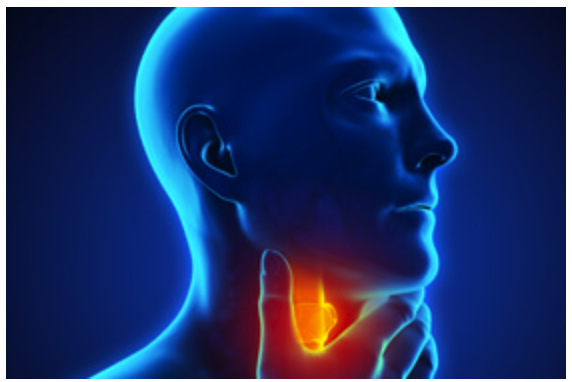AI Model for Ultrasound May Offer Low-cost Option for Thyroid Cancer Screening and Staging
 An artificial intelligence (AI) model using multiple methods of machine learning accurately detects thyroid cancer and predicts pathological and genomic outcomes through analysis of routine ultrasound images. The AI model could present a low-cost, non-invasive option for screening, staging and personalized treatment planning for the disease.
An artificial intelligence (AI) model using multiple methods of machine learning accurately detects thyroid cancer and predicts pathological and genomic outcomes through analysis of routine ultrasound images. The AI model could present a low-cost, non-invasive option for screening, staging and personalized treatment planning for the disease.
The study, being presented at the 2022 Multidisciplinary Head and Neck Cancers Symposium, accurately predicted 98.7% of thyroid nodule malignancies in the internal dataset, significantly outperforming individual AI modalities used alone. By comparison, the individual radiomics model predicted 89% of malignancies (p<0.001 compared to the multimodal platform), the deep learning model achieved 87% accuracy (p=0.002), and TDA and (ML)TI-RADS were accurate for 81% and 80% of the samples, respectively (both p<0.001). On the external validation dataset, the model was 93%accurate for malignancy prediction.
"Thyroid cancer is one of the most rapidly increasing cancers in the United States, largely due to increased detection and improved diagnostics. We have developed an artificial intelligence platform that would examine ultrasound images and predict with high accuracy whether a potentially problematic thyroid nodule is, in fact, cancerous. If it is cancerous, we can further predict the tumor stage, the nodal stage and the presence or absence of BRAF mutation," said senior author Annie Chan, MD, Director of the Head and Neck Radiation Oncology Research Program at the Mass General Cancer Center. "If caught early, this disease is highly treatable, and patients generally can expect to live a long time after treatment."
To train and validate the AI platform, researchers obtained 1,346 thyroid nodule images through routine diagnostic ultrasound from 784 patients. The ultrasound images were divided into two datasets, one for internal training and validation, and one for external validation.
Malignancy was confirmed with samples obtained from fine needle biopsy. Pathological staging and mutational status were confirmed with operative reports and genomic sequencing, respectively.
Unlike the conventional AI approach, researchers combined multiple AI methods for the model, including (1) radiomics, which extracts a large number of quantitative features from the images; (2) topological data analysis (TDA), which assesses the spatial relationship between data points in the images; (3) deep learning, where algorithms run the data through multiple layers of an AI neural network to generate predictions; and (4) machine learning (ML), in which an algorithm utilizes Thyroid Imaging Reporting and Data System (TI-RADS)-defined ultrasound properties as ML features. “By integrating different AI methods, we were able to capture more data while minimizing noise. This allows us to achieve a high level of accuracy in making predictions,” said Dr. Chan.
A multimodal model comprising radiomics, TDA and (ML)TI-RADS also was able to distinguish pathological stage (93% accuracy for T-stage, 89% for N-stage, and 98% for extrathyroidal extension). Additionally, the model identified BRAF V600E mutation, which can be treated with targeted therapy, with 96% accuracy.